|
We have been preaching to anyone who will listen for years. Do not top, pollard, knuckle, shorten, etc. your crepe myrtles. It is bad for the tree's health, it looks bad, everything about it is wrong. It doesn't matter if your parents, grandparents, neighbors, or friends have done this for years. If they or you are still doing this... stop, pretty please. How to Fix Your Crepe Myrtle
If you have been topping your crepe myrtles for years, there is a way to get them back on track over time. If you have a knuckled mess from years of trimming branches to the trunk, you are going to have to top the tree for the last time. Cut just below the knuckled mess that has been created. If your tree was clear cut at the tops, then you can skip the previous step. Next you have to wait a few weeks until new growth starts at the top. There should be a lot of small, new growth. Pick a few to keep from the tops of each trunk that are growing up and away from the center of the tree. The rest can be removed with pruners. You will let these continue to grow. Every year to six months, you can remove the smaller new growth and branches that form that grow towards other branches. It is going to take a while to look better. We are talking three to five years. If you are impatient, look into transplanting a new tree to replace it. Train Your Crepe Myrtle to Grow the Right Way Traditional pruning, or training, for crepe myrtles should keep splits in branch growth in threes. While not definitive, a good guide to go by is three limbs every three to five feet of height. Start of with three, then nine, then twenty seven. Always train your tree branches to grow up and away from the center. Remove small limbs that cross other limbs. Your goal for crepe myrtles is to have them resemble flowers in a clear vase meaning blooms up top and a center you can generally see through. Get Rid of Crepe Myrtle Suckers Small pruning for suckers can be done anytime they pop up. Those are the micro branches that pop out of fresh cuts or just about anywhere. Take some pruners and remove them, especially from the base of a mature tree. What If My Crepe Myrtle Is Too Tall If your crepe myrtle is too tall, you need a different variety of crepe myrtle. I know it is not what you want to hear, but cutting the top off looks bad and the point of a crepe myrtle is to look good. Transplant your existing crepe myrtle where it can grow and plant something else in it's place.
1 Comment
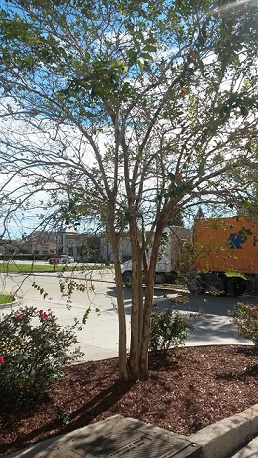 When the weather gets colder, the leaves start falling. When the leaves are gone, people really start to notice the limbs on their trees. That's why a lot of people decide to prune their trees around this time of year. Crape Myrtles are a often targeted. They are relatively short compared to large trees, such as oaks, and their limbs tend to look a little messy. Unfortunately, crape myrtles are often pruned incorrectly. Let's get this out of the way first. Do not "top off" your crape myrtles. It shortens their life, leads to disease, and distorts the way they will grow in the future. To be honest, an assortment of crape myrtle trunks sticking out of the ground in the winter looks pretty awful. The practice is called pollarding and is only appropriate for a select few varieties of trees that are grown further north. Only prune crape myrtles to enhance their natural shape. More often than not, your crape myrtle does not need to be pruned. If you have crossing branched, one of the two has to go. Prune away weak or diseased branches. Low hanging branches should also be trimmed. Remove any lingering seed pods from the warm season. Also remove any sucker growth whenever it occurs. An exception is when a tall variety of crape myrtle is planted to close to an over hanging roof. You will need to cut this back every year so it doesn't damage your property. It will look worse each year. To avoid this, replant with the correct sized crape myrtle species. 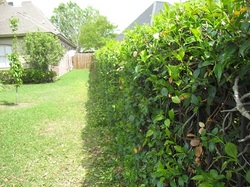 Items Needed: Garden Pruners String or twist ties Steps To Prune Jasmine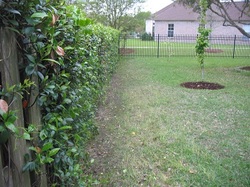
Professional PruningGreenSeasons offers professional pruning and landscape bed cleanup in the greater Baton Rouge, greater New Orleans, Slidell, Prairieville, Walker, Denham Springs, Gonzales, Baker, Zachary, Hammond and Covington areas. If you need professional pruning or landscape bed cleanup service, just click here for a free pruning quote and we will give you a call.
If you would simply like some advice on pruning or landscape bed cleanup, please contact us and we will be more than happy to help. Pruning Shapes Shrubs have a natural shape they will grow into if left untouched. The more you try to change the shrub's natural shape, the more problems you will have with the shrub. Pruning with the shape of a shrub will make life easier for the both of you. Generally, shrubs with hard leaves are better for pruning hard corners and edges. Shrubs with soft leaves are much better to let fill out and have a more natural appearance. 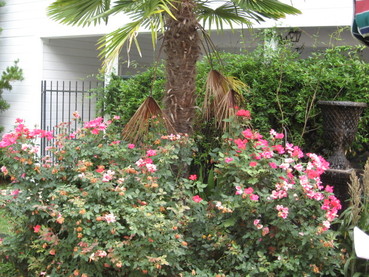 Pruning Flowering Shrubs Prune spring flowering shrubs right after blooming. Prune too early and you will miss out on the color. Prune too late and you will remove flower buds which will affect the next bloom. Stem Removal Remove all dead, damaged, diseased or poor performing stems. If there are two stems rubbing together or that have grown into one another, make a judgement call and remove the worse off of the two stems. Pruning Maintained Hedges If you have a well maintained hedge, you will need to prune it on the last frost of winter or just after. Remove the fresh green growth on the hedge to have it keep its shape. Some hedges can be maintained by pruning them three times a year, others take much more. Pruning Poorly Maintained Hedges If you have inherited a poorly maintained hedge, you will need make a choice on the height. If you want to lower the height of the hedge a little, then gradually lower it a couple inches further down each time you prune. If the hedge has grown drastically taller than you would like it, you will need to remove up to a third off the top of it. You will need powered pruners and most likely a chainsaw. This will leave your hedge looking rather unpleasant until the top starts too grow back. There is also an increased risk of losing some of your shrubs, so proceed at your own risk. Professional Pruning and Landscape Bed CleanupGreenSeasons offers professional pruning and landscape bed cleanup in the greater Baton Rouge, greater New Orleans, Slidell, Prairieville, Walker, Denham Springs, Gonzales, Baker, Zachary, Hammond and Covington areas. If you need professional pruning or landscape bed cleanup service, just click here for a free quote and we will give you a call.
If you would simply like some advice on pruning or landscape bed cleanup, please contact us and we will be more than happy to help. 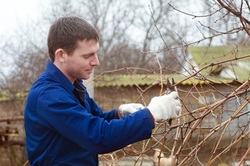 Most take a complete hiatus from their yard in the cold months. It is a great time to stay inside and stay warm. There are a few things you should pick a warm day to go out and take care of to make your lawn and landscape look much better when spring rolls around. Tree PruningThe best time to trim most trees is in the winter. They won't have nearly as many issues from heat, insects and fungus in the winter as they would in the spring or summer. Pruning trees also encourages better growth on existing branches when it warms up. Cutback Winter Damage on Plants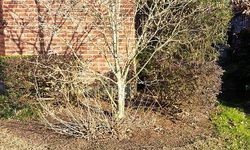 Tropical plants look very brown in the winter. Remove the dead parts so the tropical plants can start anew in the spring. Fertilize and Apply Pre-Emergent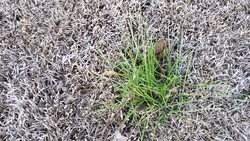 Do not use nitrogen rich fertilizer in the winter. Use a potassium rich fertilizer fertilizer instead. Additionally, include a pre-emergent that will target the weeds that pop up in spring. Treating them now with a pre-emergent will prevent the weeds from ever sprouting and being seen. Mulch and Install New TreesMulch your landscape beds once all the leaves have fallen. It will keep your landscaping looking fresh when everything else appears drab. Also, planting a tree now will give it time to adjust to the climate more easily than being planted when it is hot. This will help to ensure it has time to take root and grow. Professional LandscapingGreenSeasons is a top class professional landscaper. We provide landscape services in the greater Baton Rouge, greater New Orleans, Slidell, Prairieville, Walker, Denham Springs, Gonzales, Baker, Zachary, Hammond and Covington areas. If you would like landscaping work at your home, just click here and we will give you a call.
If you would simply like some advice on landscaping, please contact us and we will be more than happy to help. There are trees all over southern Louisiana and most likely in your yard. Trees provide shade, privacy, nuts, fruit, animal habitats, a way to get out the heat and more. With all the benefits trees give we should take our natural job as caretakers seriously. Below are a few easy to spot problems with trees that you should call in an arborist or tree company to analyze. Tree with Dead or Broken Branches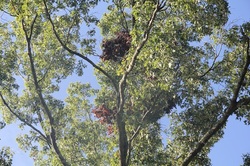 Trees that have dead branches or partially broken branches should be looked at by an arborist. These branches are only a strong gust of wind away from falling. Branches falling from this height can damage cars, damage homes and injure or kill someone. Taking care of these branches before they fall could save some money or a life. These type of problems should definitely be taken care of before hurricane season each year to help reduce the chance for damage at your home. Tree with a Clear Break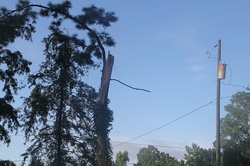 This one is really a no-brainer. If you have a tree trunk with a complete break, have an arborist see if your tree needs to come down. Usually this happens when other symptoms are ignored beforehand or a very strong hurricane comes. Tree with a Thin Canopy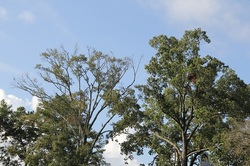 A tree where the leaves are getting sparse when other trees of the same species have dense foliage is a sign for alarm. If taken care of early, these trees have a good chance of becoming healthy again. An arborist will be able to diagnose if the tree has a lack of water, nutrition, fungus or insect problem. They will then go through steps with you on how to correct the problem if possible. Tree with Mushrooms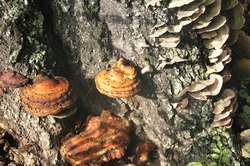 There could be a dead spot on your tree if there are mushrooms growing on the bark. The mushrooms grown there since there is extra nitrogen from the decaying plant material. If the dead spot is large enough, your tree has a greater chance of falling. Get this checked out soon. Tree Missing a lot of BarkA tree that has lost a little bark is usually not a big deal. A Tree that has a 2 foot wide area or larger of missing bark is a big deal. It could be insect damage or a lightning strike. Get in touch with an arborist to identify the problem. Tree with No Leaves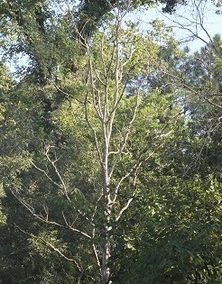 Unless it is winter, a tree without leaves is most likely already dead. Have an arborist look at it to be certain, but chances are you need to take it down. A tree with all brown leaves when it should be green is another large indicator of a serious problem. GreenSeasons is glad to help with any concerns regarding your trees you may have. If you would like for us to come out and perform a tree inspection, tree pruning, tree fertilzation, tree removal, or any other tree work, just click here and we will give your a call. If you would just like some more advice on trees, please contact us. "Most of us may not realize that azaleas represent the main nursery crop grown in many states in the Southeast and along the Gulf Coast. In Louisiana, they represent seven percent of all nursery plants grown." - LSU Agcenter As you can see, azaleas are the most popular shrub in Louisiana as well as most of the southeast. Anyone living in Louisiana or other gulf coast states would benefit from learning how to prune an azalea. When to prune azaleas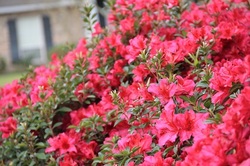 Only prune azaleas to keep them at their current size or shape. Pruning an azalea to make it smaller than it currently is will not only look awful, but will damage the azalea, possibly killing it. This is regularly done when an azalea has been planted too close to a sidewalk or parking lot. You will notice it has one side lacking any leaves or flowers and looks dead. Azaleas have very few leaves past the layer you see. Azaleas also experience the majority of their growth during one short period a year. This means if you cut an Azalea too close, you will have a reminder of it the rest of the year, and maybe longer. Historically the first time you prune an azalea each year should be in April or May. Although with the warm winters as of late, this seems to be changing. As a general rule you should prune your azaleas a week or two after all of their flowers have fallen off. This rule is easy to follow for traditional azaleas. Some newer varieties, such as the encore, will bloom throughout the year. It is still best to prune them shortly after they are done with a blooming period. Continue to trim the random shoot or two of new growth if they occur later in the year. How to prune an azalea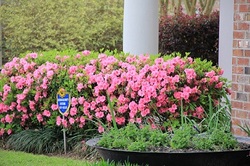
What to do if your azaleas are too bigIf you have azaleas that have grown too large for the area they were planted due to poor planning and pruning, you have three options:
Azalea Tips
The correct way to prune crepe myrtles
The wrong way to prune crepe myrtles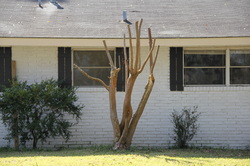 Do not top or knuckle your crepe myrtle, sometimes called "crepe murder". This creates poor tree structure and a significant loss of the tree's stored energy. This practice will lead to increased disease, a poor appearance, and, if used consistently year after year, the death of the crype myrtle. 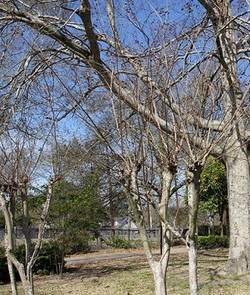 This is the irregular growth that happens when a crepe myrtle has been topped. It is very unhealthy for the tree and, I've gotta say, pretty ugly too. Prune and Mulch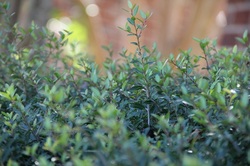 It is time for the final pruning of the year when your plants stop growing. This will not only keep the exterior of your home looking great for the next few months, it also keeps your home from getting mildew and fungus on it. By keeping a one to two foot gap between your home and your shrubs, you will help ensure proper airflow and keep the mildew and mold away. It is a great time to trim dead tree branches. You will allow more sunlight to warm your home and you remove the danger of those branches falling due to winter storms. Mulching after your final pruning will keep your landscape looking fresh for the winter and will conceal any leaves you "forgot" to pick up. It will also prevent splashing from rain hitting the soil which can cause diseases in plants. Clean Out Those Gutters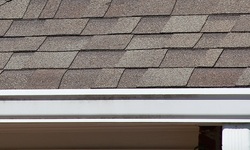 Lets be honest, most of us still have leaves in our gutters from last fall. The decomposing leaves in your gutters are home to insects, mold and mildew. They also hold water directly against your house causing wood rot and corrosion. Lets not forget that all the leaves stop the gutters from doing what they were installed to do in the first place. To remove the leaves from your gutters, you can get a sturdy ladder and a plastic scoop fashioned from an empty jug with a handle. If you have some non-slip boots and a roof that isn't very steep, you can use a leaf blower. Pressure Wash Your Home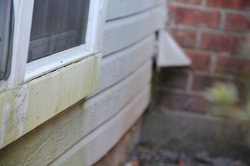 Cleaning your home with a pressure washer will not only have your home looking great for the winter, but also expose openings and chipping paint. Additionally, by removing the excess dirt and grime you will remove the places for algae and water to sit. Touch-up paintAfter pressure washing your home, you may have areas with cracked, chipped or peeled paint. It is a great time to scrape and sand those areas down and use some touch up paint to shore your home up for winter. Those areas are places where moisture will penetrate the wood and cause rot which will be a much more expensive and time consuming repair. Wrap pipes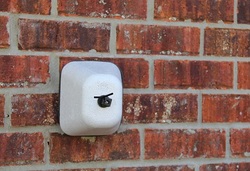 Wrap your pipes with an insulated wrap. Use insulated covering over all of your outdoor water outlet. This is one of the easiest things to do and can save you the biggest headache, as anyone who has had a cracked water pipe will tell you. If you have a raised house, be sure your exposed pipes under your house are also wrapped. Check your air conditioning ducts for tears or cracks also. Every year there seems to be a rush on these insulated coverings the first week freezing temperatures are expected, so beat the rush. Seal cracks and gaps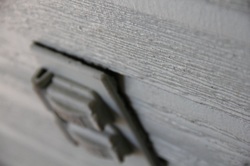 This is the big one. Really searching for and fixing these will save you a ton on your heating bill this winter. Be sure to check anywhere there is an opening in your home: doors, windows, attic pull down doors, garage doors, recessed lighting, and anywhere pipe first enters or exits your house. Weather stripping the bottom of your doors is a great place to start as a worn weather strip is a large area for heat to your home's interior. There is a fabric tent for your attic door that adds additional insulation to keep your home a steady temperature without having to run the heater unnecessarily. Insulate Your Attic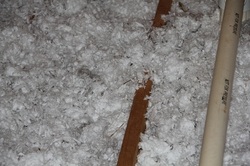 Check your attic's insulation. If you can see your rafters, you don't have enough insulation. Also, loose fill insulation, like the one shown, lose their insulating ability over time as they settle. If you haven't added insulation in your attic in a while, now is a great time to look into it. More information on insulating and weather proofing can be found on the Department of Energy's website. |
AuthorCharlie Casselberry Categories
All
Archives
April 2024
|
Contact |
Services |
About |
Locations
|
GreenSeasons
|
Baton Rouge Office
11628 S Choctaw Drive, Suite 227 Baton Rouge, Louisiana 70815 |
Greenwell Springs Office
14461 Frenchtown Road Greenwell Springs, LA 70739 |
Slidell Office
56010 Highway 433 Slidell, Louisiana 70461 |
© 2020 GreenSeasons

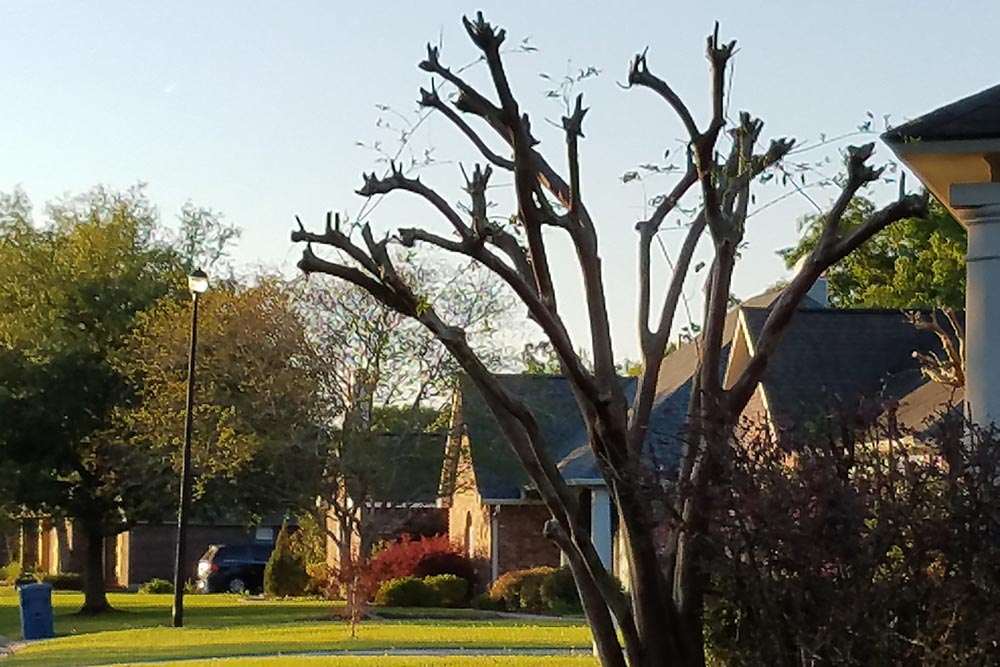
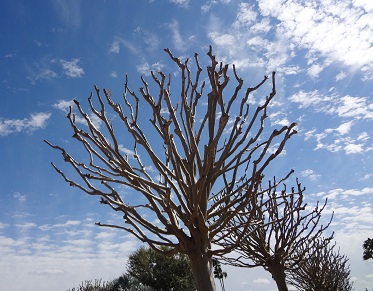

 RSS Feed
RSS Feed
